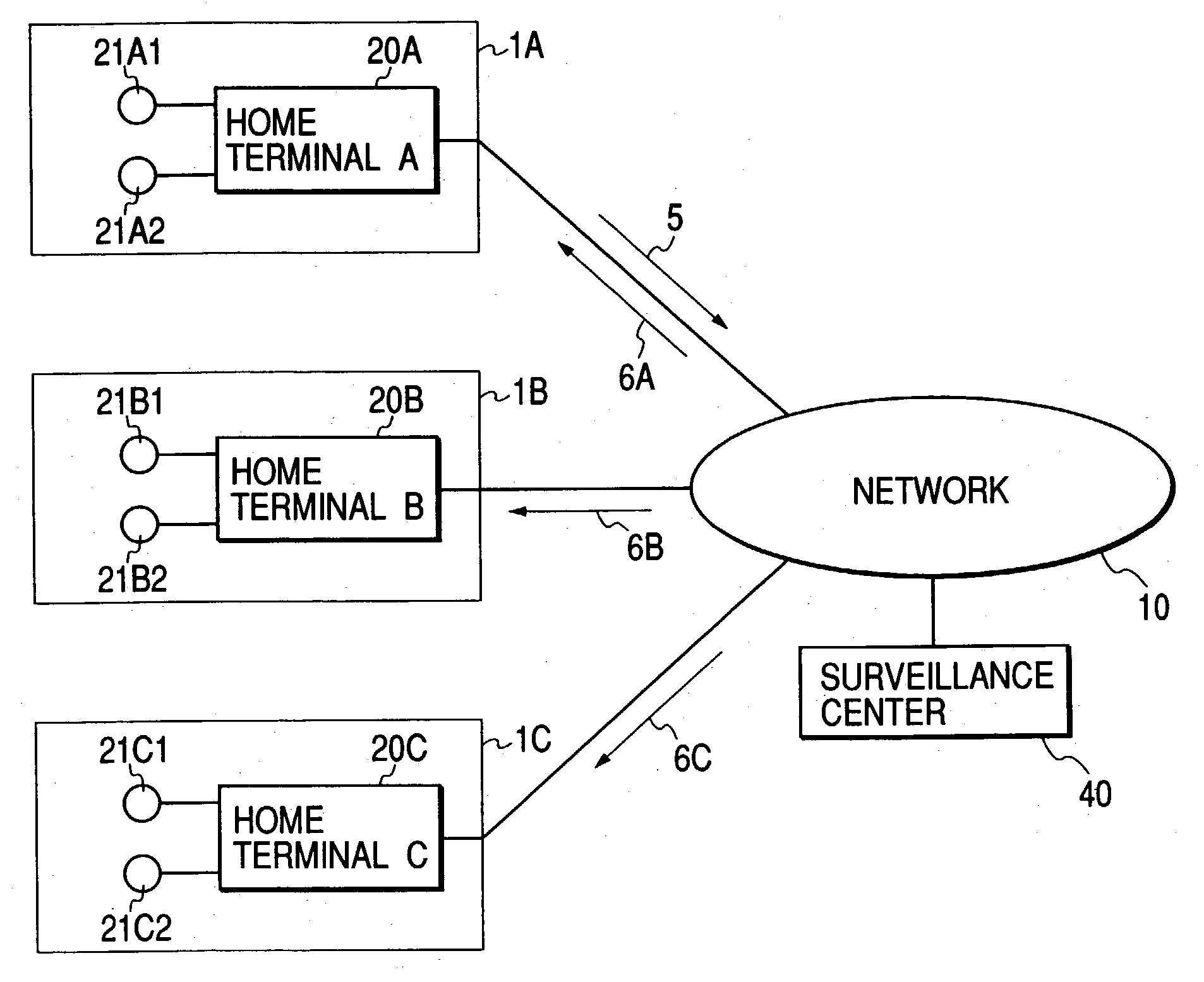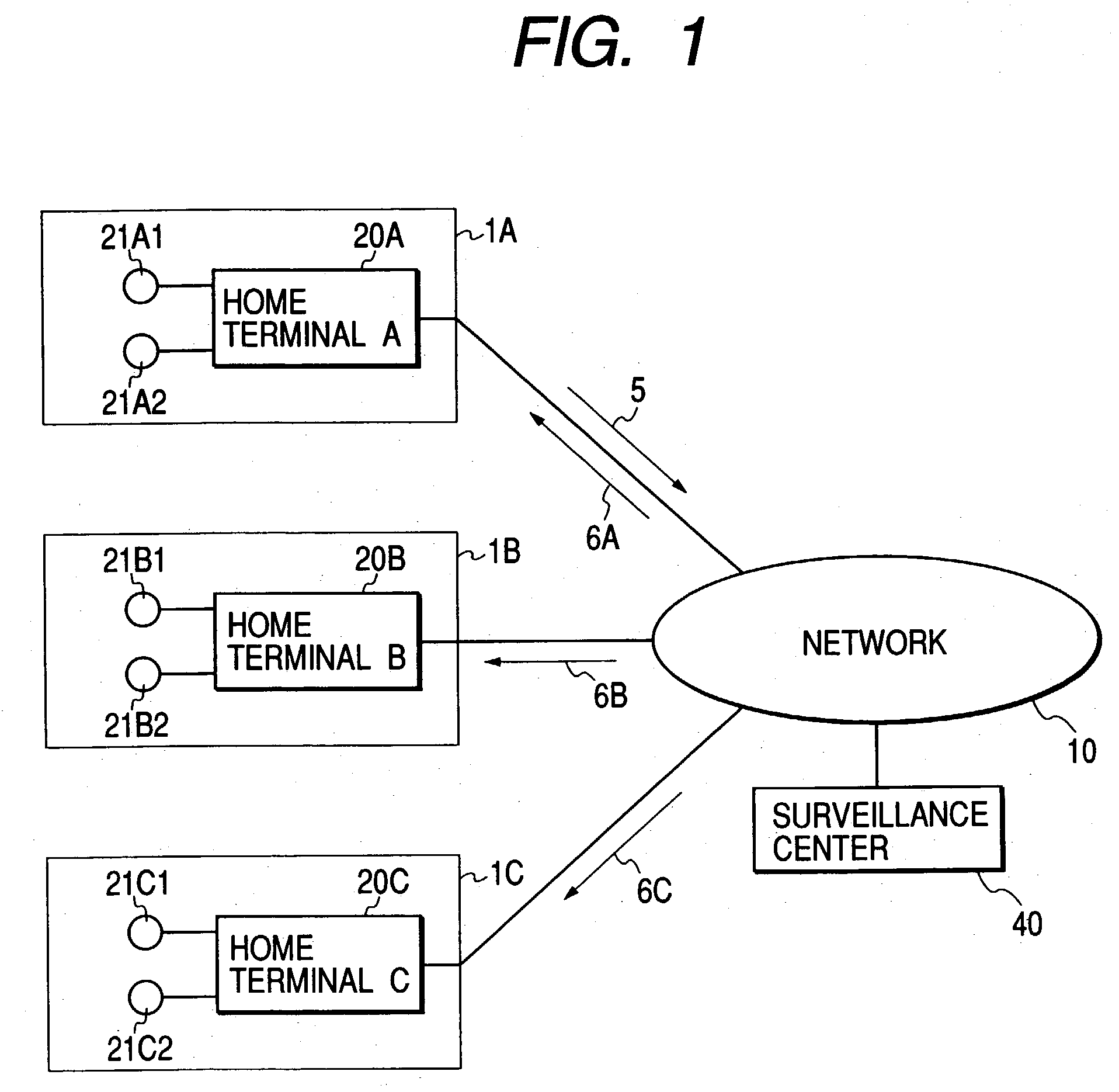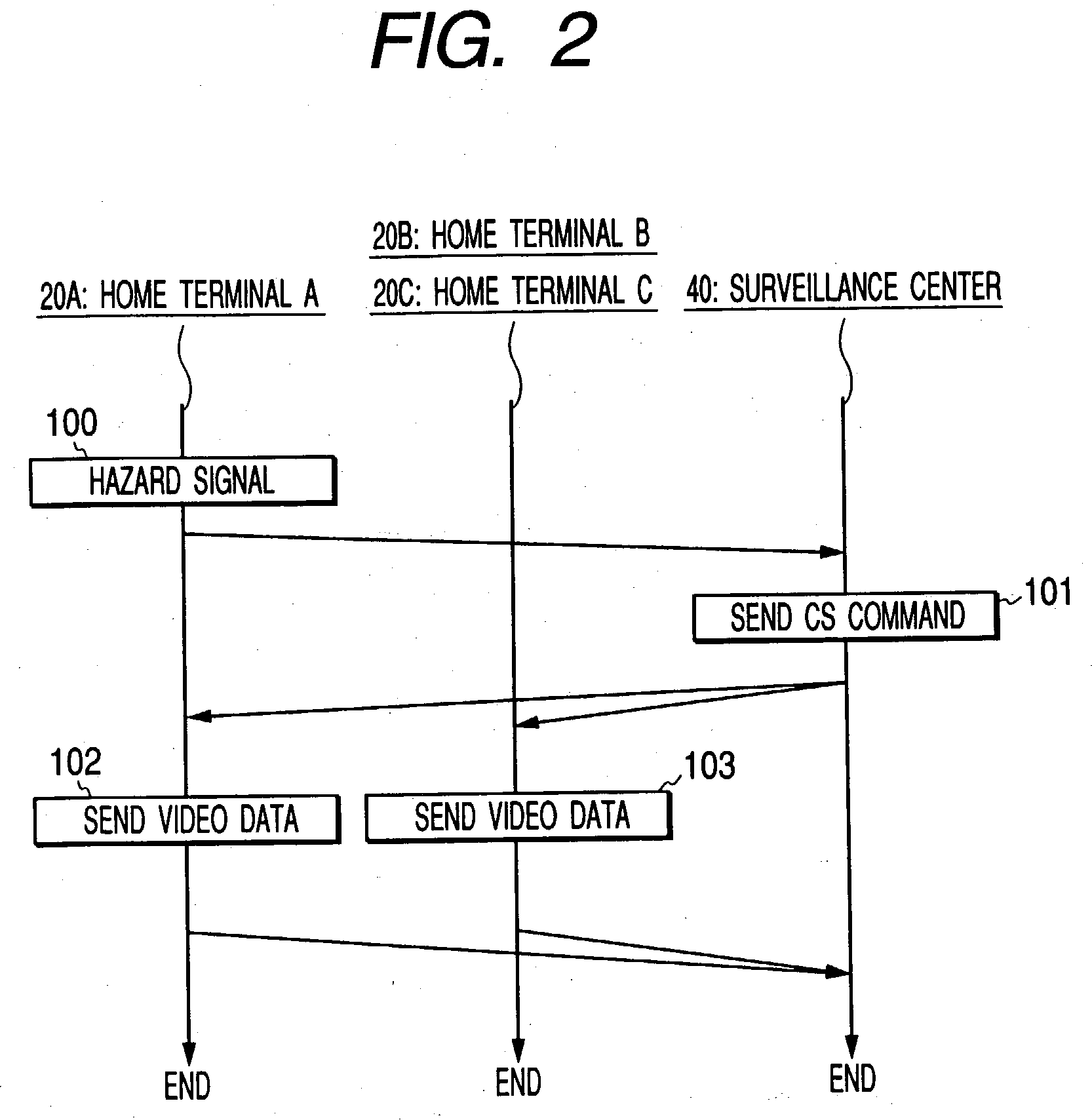Surveillance system and surveillance method with cooperative surveillance terminals
a cooperative surveillance and surveillance system technology, applied in the field of surveillance system and surveillance method, can solve the problems of not strengthening surveillance and collecting related data, surveillance setup cannot be arranged immediately and the surveillance setup for the moving hazard source cannot be strengthened
- Summary
- Abstract
- Description
- Claims
- Application Information
AI Technical Summary
Problems solved by technology
Method used
Image
Examples
embodiment 1
[0023] The cooperative surveillance system of Embodiment 1 includes three homes 1A, 1B, 1C, each equipped with two surveillance cameras. In this system, cooperative surveillance is performed among the three homes. Equipment in home 1A consists of surveillance cameras 21A1 and 21A2 and a home terminal 20A. The surveillance cameras 21A capture the views around them and send video data of the views to the home terminal 20A. The home terminal 20A analyzes the video data and, if the video data meets predetermined conditions of hazard detection, sends a hazard signal 100 to the surveillance center over the network 10.
[0024] Equipment in home 1B consists of surveillance cameras 21B1 and 21B2 and a home terminal 20B. Equipment in home 1C consists of surveillance cameras 21C1 and 21C2 and a home terminal 20C. These equipments also operate as described for the equipment in home 1A.
[0025] Referring to FIG. 2, signaling in the system of Embodiment 1 will be explained for a case where a hazard h...
embodiment 2
[0032] Referring to FIG. 4, signaling in the system of Embodiment 2 will be explained for a case where a hazard has occurred in home 1A. When a hazard occurring is detected in home 1A, the home terminal 20A sends a hazard signal 100 to the surveillance center 40. Upon the detection of the hazard occurrence, the surveillance center 40 sends a cooperative surveillance command 101 to not only home 1A where the hazard has just occurred, also homes 1B and 1C in the vicinity of the home 1A and the outside terminal 3D installed in the neighborhood of these homes. When the home terminals 20A, 20B, 20C, and the outside terminal 3D receive cooperative surveillance commands, respectively, they send video data 102, 103 to the surveillance center 40 through the network 10. The video data is the video data of the views captured by the surveillance cameras 21A1, 21A2, 21B1, 21B2, 21C1, 21C2 for the home terminals and the surveillance camera 31D1 connected to the home terminal 3D. Based on the vide...
embodiment 3
[0037] In the system of Embodiment 3, essentially, cooperative surveillance is performed among three homes 1A, 1B, 1C with their surveillance cameras and the outside surveillance camera equipment 3D. In addition, terminals that can receive data and are respectively used by the ones who live in the homes 1A, 1B, 1C, but are not home now, namely, user terminals 50A, 50B, 50C are connected to the network 10. Examples of the user terminals 50A, 50B, 50C are personal computers and mobile phones which are wired or wirelessly connected to the network 10. Equipment configurations and operation at the homes 1A, 1B, 1C, and the operation of the outside terminal 3D are the same as described in the foregoing embodiments.
[0038] In the system of Embodiment 3, for example, when a hazard occurs in home 1A, the surveillance center 40 sends a cooperative surveillance command 101 to the home 1A, homes 1B, 1C in its vicinity, and outside terminal 3D. In addition, the surveillance center 40 sends a haza...
PUM
 Login to View More
Login to View More Abstract
Description
Claims
Application Information
 Login to View More
Login to View More - R&D
- Intellectual Property
- Life Sciences
- Materials
- Tech Scout
- Unparalleled Data Quality
- Higher Quality Content
- 60% Fewer Hallucinations
Browse by: Latest US Patents, China's latest patents, Technical Efficacy Thesaurus, Application Domain, Technology Topic, Popular Technical Reports.
© 2025 PatSnap. All rights reserved.Legal|Privacy policy|Modern Slavery Act Transparency Statement|Sitemap|About US| Contact US: help@patsnap.com



